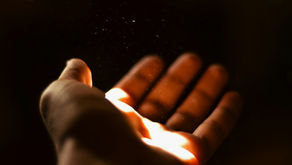Our favorite photos of the Uganda Baha'i House of Worship
- Uplifting Words

- Jul 13, 2019
- 2 min read
Updated: Aug 12, 2019
There are tens of thousands of beautiful photographs of the Baha'i House of Worship in Kampala, Uganda. Here is a list of our favorite.
What is a Baha'i House of Worship?
As a gathering place for prayer and meditation, Bahá'í Houses of Worship, or a "Mashriqu'l-Adhkár", are the religious buildings that most closely approximate the role of the church, the temple or the mosque. Yet they are also something more.
The term `Mashriqu'l-Adhkár' means literally, `Dawning-place of the praise of God'.
To appreciate the significance of this Bahá`í institution, we must lay aside all customary ideas of the churches and cathedrals of the past. The Mashriqu'l-Adhkár fulfils the original intention of religion in each dispensation, before that intention had become altered and veiled by human invention and belief.
Integral with the Temple are its accessory buildings, without which the Mashriqu'l-Adhkár would not be a complete social institution. These buildings are to be devoted to such activities as a school for science, a hospice, a hospital, a home for orphans. Here the circle of spiritual experience at last joins, as prayer and worship are allied directly to creative service, eliminating the static subjective elements from religion and laying foundation for a new and higher type of human association.
So far, eight continental Houses of Worship have been built with a number of local ones built in multiple locations around the world- a token of the Faith's global progress. At the present stage of the Faith's development, Bahá'ís have focused on creating and developing the social and spiritual institutions of community life rather than on the construction of physical buildings in every community. Yet those Houses of Worship which have been constructed stand as beacons calling the world to a new mode of religious worship and life.
The Baha’i House of Worship, Africa, Uganda
The Baha’i Temple in Uganda was built in the year 1962. It took four years to complete the construction, which began in the year 1958. Situated at Kikaaya Hill on the outskirts of Kampala, the temple, like every Baha’i temple, has unique style. The green color dome is made of mosaic tiles acquired from Italy and the tiles in the lower roof are acquired from Belgium. The glass windows add beauty to the interior with its green, white, blue and amber colors. As the nine doors open, you are captivated by the stunning interior that resembles the fields and the skies on a sunny day. Learn More >

























